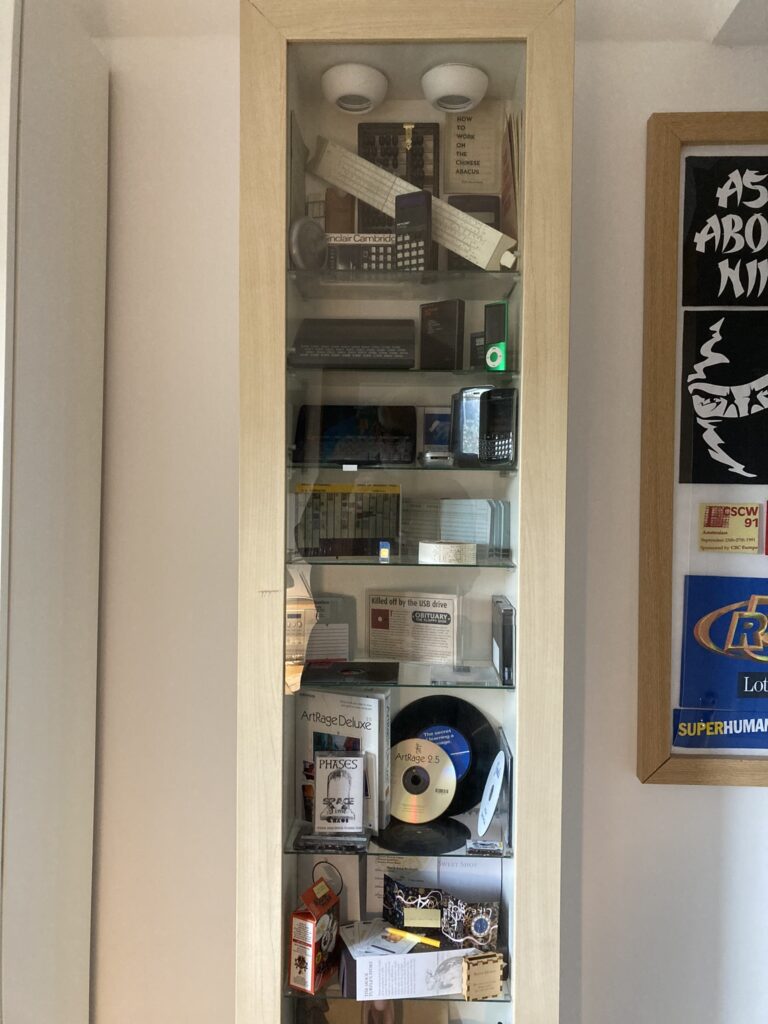Sometime around the late 1960s or early 70s I acquired a Chinese abacus complete with instructions on how to use it. I already had a slide rule and associated log table and booklet of mathematical formulae for use by candidates of A Level Mathematics and Physics papers from the Oxford and Cambridge Schools Examination Board. Some years later, in 1981, my wife bought me a Sinclair ZX 81 for my birthday – an iconic present at the time: computers were NOT home devices in those days. It took me a few years to join the dots, but I gradually realised I had the basis of a collection of computing-oriented items, and that I was slowly adding to it as time went by with items such as floppy discs, calculators, and Personal Digital Assistants (PDAs). Once I’d cottoned on to the possibility, I remembered I also had a program on Paper Tape that I’d produced at University, and a pack of punched cards that I’d used for my final year project. The notion of a collection of computing objects became cemented in my mind; and I made sure to keep relevant objects as I replaced them in the surging wave of technology development.
However, it wasn’t until around 2010 that I decided to actually exhibit the pieces. The notion was probably inspired by seeing various display cabinets for sale when going round IKEA. I eventually decided I’d buy one of the units and I duly bought it, assembled it, installed it in my study in Aylesbury, and put all my computing items into it. When we moved in 2015, I took the cabinet with me and installed it in my new study as shown in the photo below.
However, by 2023 I’d run out of bookcase space, and I realised I could fit in just one extra bookcase by moving the display case about 50cm to the right. As I started to plan this change, I realised it was a tremendous opportunity to explore how to curate 3D objects properly. I would have to remove everything from the display case in order to move it, and, as I did so, I could index every item and then explore how to mark it – a problem I had previously encountered with paper mementos and loft items. Then, putting the objects back into the display case would enable me to explore the crafts of display and description. I had also started putting non-computer objects into the cabinet, and this exercise would also enable me to investigate the challenges of mixed collections, of too little space, and of how to manage items that have to be kept in store. That is the journey I’m about to embark on.

